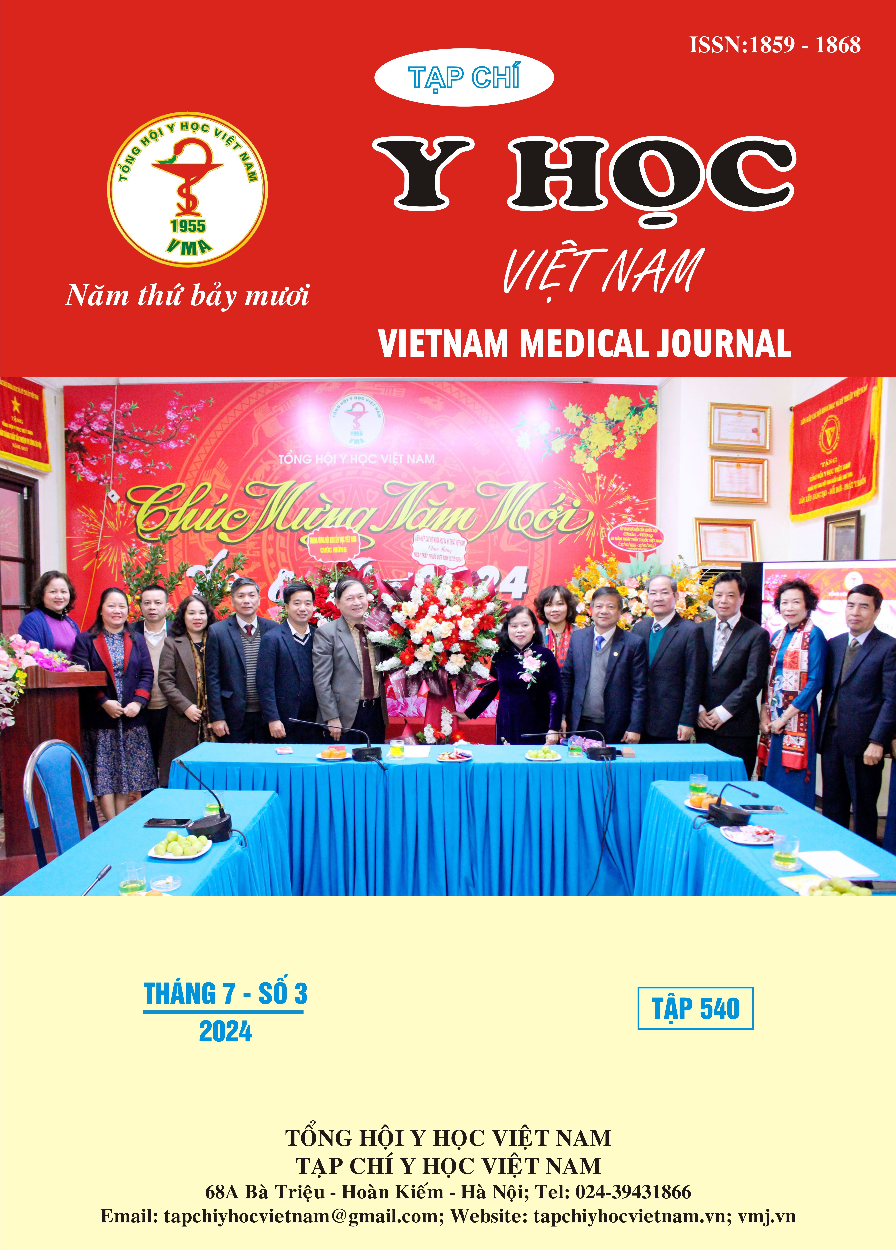CẮT GAN LỚN, CẮT ĐƯỜNG MẬT NGOÀI GAN KẾT HỢP CẮT ĐOẠN MẠCH MÁU TRONG ĐIỀU TRỊ UNG THƯ ĐƯỜNG MẬT QUANH RỐN GAN XÂM LẤN MẠCH
Nội dung chính của bài viết
Tóm tắt
Mục tiêu: Thông báo kêt quả sau mổ ung thư đường mật quanh rốn gan (peri hilar cholangiocarcinoma) xâm lấn mạch máu. Đối tượng và phương pháp: Nghiên cứu hồi cứu từ tháng 6/2022 đến tháng 6/2023 những trường hơp ung thư đường mật quanh rốn gan có xâm lấn mạch máu được cắt gan lớn, cắt đường mật ngoài gan và cắt đoạn mạch máu tại trung tâm ghép tạng bệnh viện Việt Đức. Kết quả: Có 2 bệnh nhân ung thư đường mật quanh rốn gan xâm lấn mạch: bệnh nhân 1 có chẩn đoán ung thư đường mật quanh rốn gan loại 3a được cắt gan phải và hạ phân thuỳ 1, cắt đường mật ngoài gan kèm cắt đoạn tĩnh mạch (TM) cửa, nối thân chính TM cửa với TM cửa trái. Bệnh nhân 2 chẩn đoán ung thư dường mật quanh rốn gan loại 3b được cắt gan trái và hạ phân thuỳ 1, cắt đường mật ngoài gan, cắt đoạn TM cửa nối TM cửa thân chính với TM cửa phải và cắt đoạn động mạch (ĐM) gan nối ĐM gan phải với ĐM vị tá tràng. Cả 2 bệnh nhân diễn biến sau mổ ổn định, không có biến chứng sau mổ. Hiện bệnh nhân 1 sau mổ 1.5 năm và bệnh nhân 2 sau mổ 1 năm, ổn định và không có tái phát sau mổ. Kết luận: ung thư đường mật quanh rốn gan xâm lấn mạch máu được phẫu thuật an toàn, đạt tính triệt căn và bước đầu đem lại kết quả điều trị khả quan sau mổ.
Chi tiết bài viết
Từ khóa
perihilar cholangiocarcinoma, major liver resection, hepatic vascular resection
Tài liệu tham khảo
2. Jeroen L. A. van Vugt et al., “The Prognostic Value of Portal Vein and Hepatic Artery Involvement in Patients with Perihilar Cholangiocarcinoma,” HPB 20, no. 1 (January 1, 2018): 83–92, https://doi.org/10.1016/j.hpb. 2017.08.025.
3. T Sugiura et al., “Major Hepatectomy with Combined Vascular Resection for Perihilar Cholangiocarcinoma,” BJS Open 5, no. 4 (August 5, 2021): zrab064, https://doi.org/10.1093/ bjsopen/zrab064.
4. Gerald Klatskin, “Adenocarcinoma of the Hepatic Duct at Its Bifurcation within the Porta Hepatis,” The American Journal of Medicine 38, no. 2 (February 1965): 241–56, https://doi.org/ 10.1016/0002-9343(65)90178-6.
5. A Nakeeb et al., “Cholangiocarcinoma. A Spectrum of Intrahepatic, Perihilar, and Distal Tumors.,” Annals of Surgery 224, no. 4 (October 1996): 463–75.
6. T Ebata et al., “Proposal to Modify the International Union Against Cancer Staging System for Perihilar Cholangiocarcinomas,” British Journal of Surgery 101, no. 2 (December 23, 2013): 79–88, https://doi.org/10.1002/bjs.9379.
7. Takehiro Noji et al., “Concomitant Hepatic Artery Resection for Advanced Perihilar Cholangiocarcinoma: A Narrative Review,” Cancers 14, no. 11 (May 27, 2022): 2672, https://doi.org/10.3390/cancers14112672.
8. Hiroshi Shimada et al., “Hepatic Resection Combined with Portal Vein or Hepatic Artery Reconstruction for Advanced Carcinoma of the Hilar Bile Duct and Gallbladder,” World Journal of Surgery 27, no. 10 (October 2003): 1137–42, https://doi.org/10.1007/s00268-003-6801-6.


